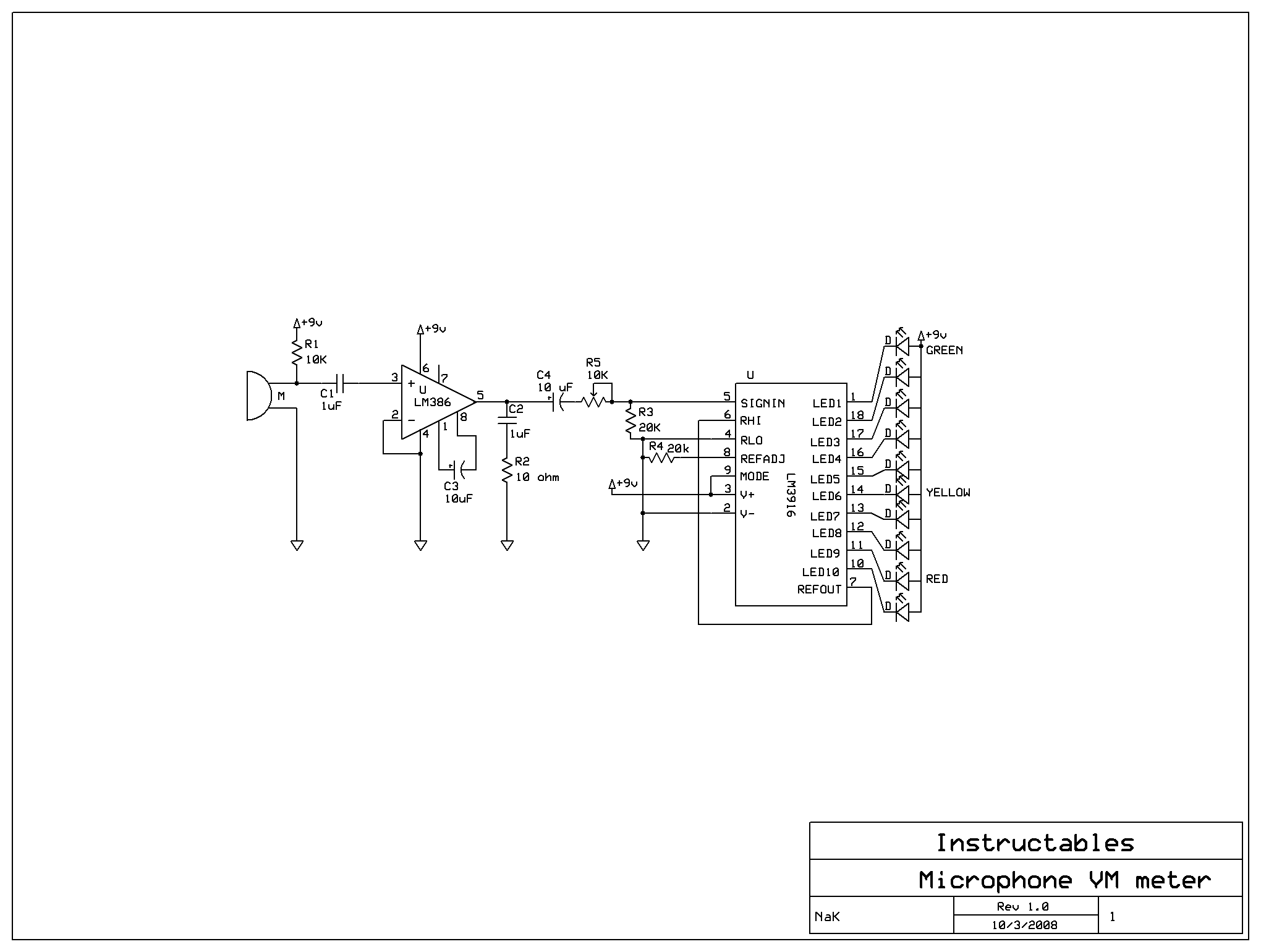That's a pretty poor design. There are so many problems with it that I don't want to start describing them all because I would be here all day. But the LM3916 is the right IC to use. The data sheet is at
http://www.ti.com/lit/ds/symlink/lm3916.pdf. I STRONGLY recommend you use a different design that still uses the LM3916. Do some Googling or use one of the designs in the data sheet.
The value of the resistor that feeds supply current into the microphone (R1 in that design) is not critical. Do you have any information on the microphone you will be using?
When you say you want to drive 40 LEDs instead of just ten, do you mean that you want ten "segments" but you want four LEDs in each? Or do you mean you want to expand the number of segments from ten to 40? The latter might be tricky because of the logarithmic response of the LM3916. The former is possible but will require extra components.
Driving multiple LEDs from a single output with a 7.4V supply can be done by paralleling LEDs (preferably with individual current limiting resistors) but as you said, this increases the load on the device and could damage it. The proper way is to use a transistor or MOSFET as a buffer on each output - for example, a PNP transistor (e.g. a 2N3906) with its emitter connected to the positive supply rail.
When the LM3916 wants to illuminate an LED, it pulls its output pin low. This pin can be connected directly to the base of a buffer transistor, because the LM3916 has current-limited outputs. This turns the buffer transistor ON and it pulls its collector up to the positive supply rail. The collector can drive four LEDs, either in parallel with individual current limiting resistors, or in two series chains.

See
https://www.electronicspoint.com/resources/got-a-question-about-driving-leds.5/ for guidance on how to choose the series resistor values.
Set the LM3916's LED current to around 1.5 mA by setting the resistance between pin 7 and 0V as described in the data sheet. This will provide about 1 mA of base current to each transistor. The actual LED currents will be determined by the series resistors, as described in that resource on Electronics Point.




